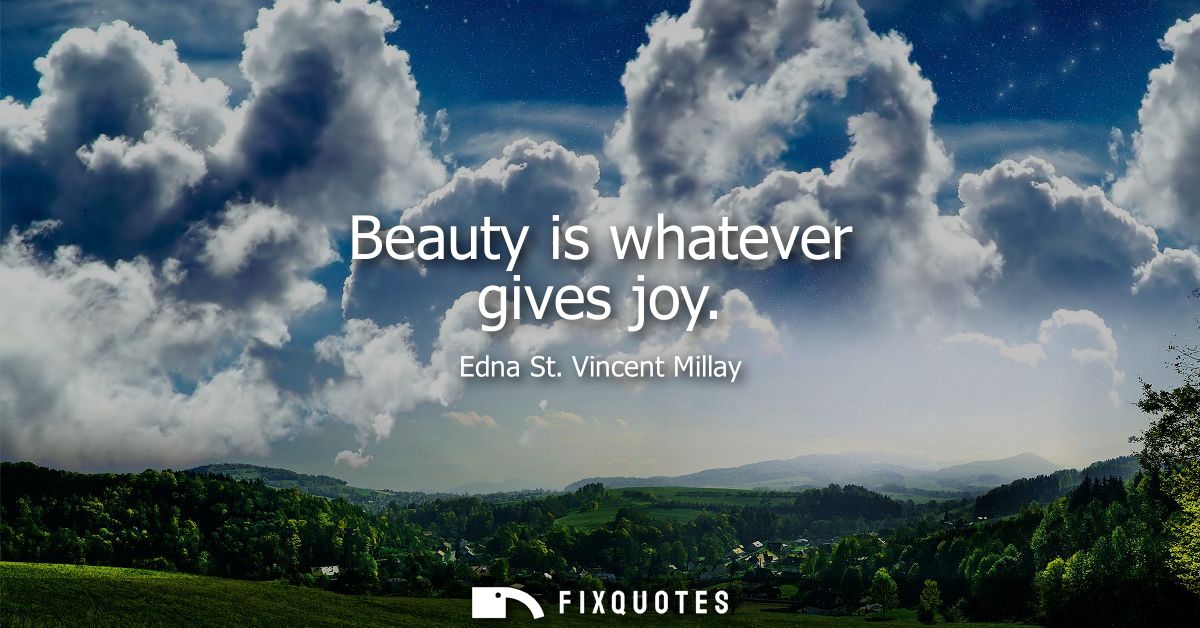"Beauty is whatever gives joy"
About this Quote
Edna St. Vincent Millay, an eminent American lyrical poet and playwright, sharply crystallizes the essence of beauty in her words – “Beauty is whatever gives joy”. Millay expands the horizons of traditional interpretations of beauty, breaking the shackles of strictly visual or physical appeal. This pioneering concept challenges the established ideas that categorically equate physical appeal with beauty. It places emphasis on the experience of joy, suggesting a more profound and personal connection with beauty that surpasses the superficial.
Beauty trails beyond the limited scopes of physical or aesthetic appeal. It evokes and intertwines with our emotions, ultimately resonating with our upbringing, culture, personal experiences, and individual perceptions. Every individual, imbued with unique life experiences, beholds beauty differently, as what brings joy varies greatly from one individual to another.
By accentuating joy as the source of recognising beauty, Millay prompts a reassessment of usual beauty standards and narrow societal constructs that often dictate and determine what we perceive as beautiful. Instead, her interpretation encourages an individualistic and introspective exploration of beauty. It is an invitation to seek beauty that resonates with one's innermost sentiments and sparks joy within.
Beauty is no longer restricted to a mere outer facade but is measured by the happiness it brings. It could be the melody of a bird chirping early morning, the vibrant hues of a painting, the rhythm of a poem, or the aged lines on a grandparent's face, narrating tales of wisdom and experience. The underlying principle remains that it lights up the soul, ignites enthusiasm, and executes a ballad of joy inside one's heart.
As pleasure is subjective, so is beauty, and Millay's interpretation strikes at the heart of this subjectivity. Tying beauty to joy offers an all-inclusive and compassionate view towards identifying bliss in our surroundings, breaking free from conventional barriers of beauty. Personal satisfaction becomes the yardstick to measure beauty.
In conclusion, Millay's perception of beauty is empowering, advising us to explore our personal emotional landscapes to find and appreciate what we consider beautiful. It encourages a celebration of individuality and personal happiness, emboldening us to define beauty on our own terms, making the pursuit of beauty much more personal and meaningful.
About the Author

